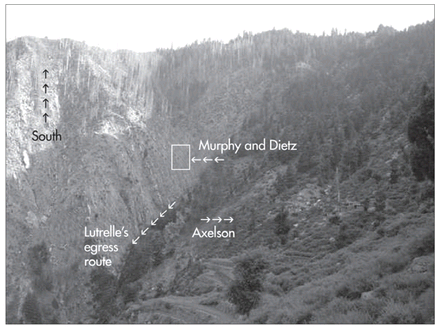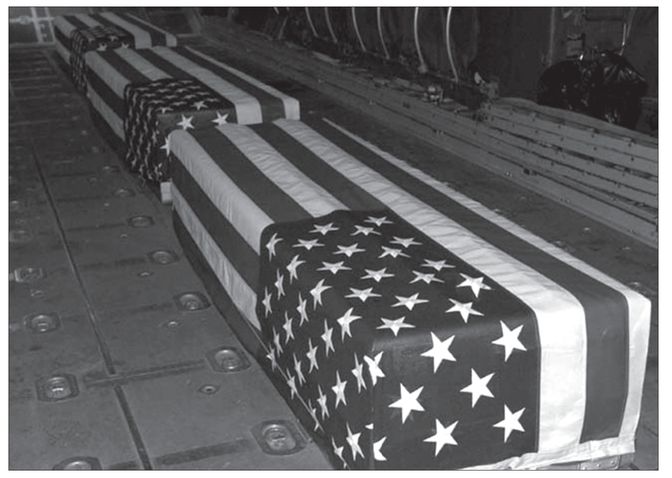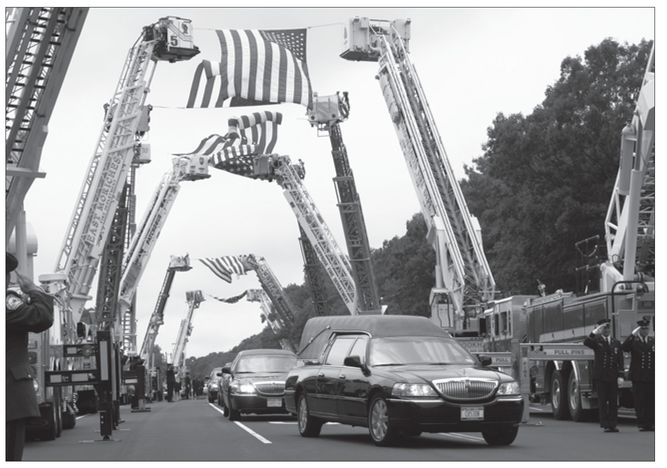SEAL of Honor (16 page)
Authors: Gary Williams

Dive Tower







After learning how to tie knots on land, it was time for the trainees to practice their skills underwater. This was done at the dive tower, a fifty-foot vertical steel cylinder filled with clear, heated freshwater. In the first evolution, the students dived to a depth of thirty feet and tied three separate knots on a post. The second evolution, a real confidence booster, involved tying a single knot during a fifty-foot dive. Instructors were in the water monitoring every student during the second evolution.
Physical-Skills EvolutionsFirst Phase scores were no longer good enough. The timed and graded evolutions now required a two-mile ocean swim with fins in eighty minutes; a four-mile run in long pants and boots in thirty-one minutes; completion of the O-course
in 10:30; and successful completion of three-and-a-half-mile and five-and-a-half-mile ocean swims. As in First Phase, on Friday of the last day in Second Phase, the students evaluated their training evolutions and their instructors. The Academic/ Performance Review Board again reviewed the academic and physical training performance of each student to determine who proceeded on to Third Phase. The board reviewed with each student where they excelled and where they could use improvement. Michael earned the right to proceed to the next phase of BUD/S.
Third Phasein 10:30; and successful completion of three-and-a-half-mile and five-and-a-half-mile ocean swims. As in First Phase, on Friday of the last day in Second Phase, the students evaluated their training evolutions and their instructors. The Academic/ Performance Review Board again reviewed the academic and physical training performance of each student to determine who proceeded on to Third Phase. The board reviewed with each student where they excelled and where they could use improvement. Michael earned the right to proceed to the next phase of BUD/S.
Third Phase, also known as the Land-Warfare Phase, introduced the prospective SEALs to demolitions and tactics. This nine-week program was where the class learned the elements of land warfare as practiced by Navy commandos. As in the previous phases, this required specialized equipment used by the U.S. Army, including H-gear, weight-bearing harnesses, canteens, ammunition pouches, sleeping bags, and rucksacks. During Third Phase, sailors learned the basics of being a soldier.
H-GearH-gear was a canvas utility belt used to carry a light load of personal infantry gear. It was supported by a padded pair of nylon suspenders, and had to be set up in a prescribed manner: four ammunition pouches in front, two on either side of the front-buckle catch; a canteen hung just behind each hip; and a personal first-aid kit in the small of the back. The only piece of equipment with optional placement was the combat knife, which was usually placed opposite the rappelling line. All buckles and metal surfaces were painted flat black or covered with olive-colored tape to prevent them from making noise or reflecting light.
Timed EvolutionsThe timed PT evolutions of Second Phase were no longer good enough and again lowered. Almost all of the conditioning runs in Third Phase were done with full rucksacks and H-gear. A fully loaded rucksack might weigh forty pounds, not including other equipment on the H-gear. The O-course time was lowered to an even ten minutes; the four-mile beach run in long pants and boots to thirty minutes. In addition, the trainees had to complete a two-mile ocean swim with fins in seventy-five minutes, and successfully complete a fourteen-mile run with a fully loaded rucksack.
Weapons TrainingWeek one of Third Phase consisted of learning the basics of using a compass, reading a map, and walking a line of bearing using a pace count to measure distance.
Week one also introduced field weapons, beginning with weapons safety and becoming familiar with the SEAL arsenal.
Week one also introduced field weapons, beginning with weapons safety and becoming familiar with the SEAL arsenal.
Monday of week two sent the students to NSW’s Mountain Warfare Training Facility at La Posta, California. At an elevation of three thousand feet, this training center, located on thirteen hundred acres, includes a five-thousand-meter mountain-endurance training course for a timed land-navigation checkout evolution. The facility continues today to play a vital role in the training of NSW forces because the terrain closely resembles the environments found in Korea, Iraq, and Afghanistan.
During their field training, Michael and the other students were introduced to the SEAL’s primary weapon, the M4 rifle, weapons training, and shooting qualifications. The training facility has a state-of-the-art shooting range that includes metal silhouettes at distances of fifty to one hundred meters. The trainees learned that smooth is fast. Speed comes from learning a correct, smooth technique. Firing two shots in rapid succession at each target, they were graded on both time and accuracy. NSW and all U.S. Special Forces use a modified M4, specifically the M4A1, a fully automatic variation of the basic M4 carbine. The M4A1 is a gas-operated, aircooled, magazine-fed, selective fire, shoulder-fired weapon with a telescoping stock that provides greater maneuverability in close quarters and combat-extended range with lethal capability. It has an effective range of about five hundred to six hundred meters. The USSOCOM modification is a SOPMOD Block I Kit that features a rail interface system (RIS), a special hand guard, a shortened quick-detachable M203 grenade launcher, a leaf sight, a sound suppressor, a backup rear sight and a visible laser-infrared designator, reflex sights, and a night-vision sight.
“Gentlemen, This Changes Everything”At about 5:45 Pacific time on the morning of September 11, 2001, Ensign Michael Murphy and his BUD/S classmates were conducting a morning PT session before continuing their reconnaissance training. One of the instructors suddenly called them into the classroom. There, two large television screens suspended in the corners at the front of the room displayed the carnage and devastation occurring on the other side of their country. For the next ninety minutes the men all sat in disbelief as both towers of the World Trade Center collapsed, the Pentagon was attacked, and a fourth plane was reported down in Somerset County, Pennsylvania.
As Ensign Murphy watched the events unfold so close to his home, he was concerned for his best friends, Jimmie and Owen O’Callaghan, both now serving as New York City policemen. He knew that they would be at the World Trade Center, along with their uncle, who was a member of the New York City Fire Department. As his thoughts of home moved like a video screen through his mind, he stared at the television. The images of the towers collapsing and the resulting deaths of thousands of his fellow New Yorkers was seared into every neuron of his brain.

Newly commissioned Ensign Michael P. Murphy receiving his first salute upon graduating from Officer Candidate School on December 13, 2000.
(Courtesy of the Murphy family)
(Courtesy of the Murphy family)

Graduation picture of BUD/S Class 236. Ensign Michael Murphy is on the far left in the top row.
(U.S. Navy)
(U.S. Navy)


This is where the fight took place. The image also shows where Murphy, Dietz, and Axelson fell along with Lutrell’s route of escape.
(Photo courtesy of Ensign Christopher Reed)
(Photo courtesy of Ensign Christopher Reed)

Taken on June 18, 2005, as he prepares for yet another mission, this is one of the bestknown pictures of Lieutenant Michael Murphy.
(Courtesy of the Murphy family)
(Courtesy of the Murphy family)

The ramp ceremony at Bagram Airfield, Afghanistan, on July 5, 2005. The flag-draped military cases are carrying the remains of Lieutenant Michael P. Murphy (front) and Petty Officer Third Class Danny Dietz (rear).
(Courtesy of Ben Sauers)
(Courtesy of Ben Sauers)

Other books
The House of Rothschild by Ferguson, Niall
Controlled Explosions by Claire McGowan
A Dawn of Death by Gin Jones
In a Heartbeat by Donna Richards
Long Knives by Rosenberg, Charles
FRAGILE: Part 1 by Kimberly Malone
The Magician's Assistant by Patchett, Ann
Krondor the Betrayal by Raymond E. Feist
Samurai Code by Don Easton